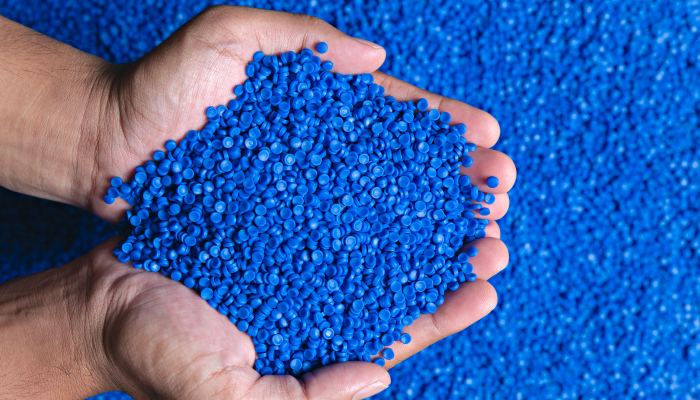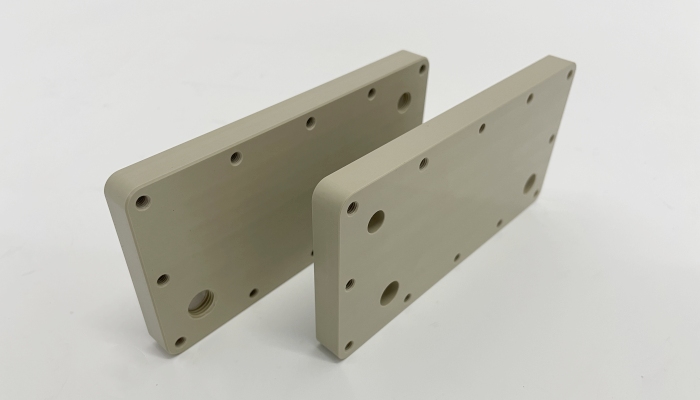
PEEK is a super wear-resistant and high-temperature-resistant plastic material. Not only is it resistant to hydrolysis, it is also unaffected by steam and moisture. Common colors are natural and brown. PEEK is also one of the most expensive plastic materials in the world. It has very strict requirements on material composition, difficult manufacturing process, and low output.
PEEK material can be filled with a variety of materials. According to the needs of different industries, other materials can be added to meet the performance requirements of special industries.In this article, we will introduce the characteristics, advantages and disadvantages of PEEK materials.
What is PEEK Materials?
PEEK (polyether ether ketone) is an advanced thermoplastic polymer that occupies an important position in high-performance engineering plastics for its excellent thermal stability and mechanical properties. It is composed primarily of carbon, hydrogen, and oxygen elements with repeating ether and ketone groups.
| Properties of the Material | |
| Commercial product name | PEEK |
| Melt density (g/cm³) | 1.32 |
| Recommended mold temperature (°C) | 155 |
| Recommended melt temperature (°C) | 380 |
| Material characteristics | Semi crystalline |
| Ejection temperature (°C) | 85 |
| Modulus of elasticity (MPa) | 20,000 |
| Poisson ratio | 0.3 |
| Shear modulus (MPa) | 90,000 |
Advantages of PEEK Materials
Temperature resistance: PEEK is capable of operating at temperatures up to 250°C for extended periods of time and, in extreme cases, can withstand temperatures of up to 300°C for short periods of time, making it very useful in the aerospace and automotive industries.
Mechanical Properties: This material is not only hard, but also has excellent tensile strength and rigidity, allowing it to be used in the manufacture of structural components that are subjected to heavy loads.
Chemical Resistance: PEEK shows excellent resistance to most acids, alkalis and solvents, making it suitable for use in the manufacture of chemical processing equipment and medical devices.
Wear and Fatigue Resistance: PEEK exhibits superior wear and fatigue resistance in applications subjected to repeated loads.
Disadvantages of PEEK Materials
Cost issues: PEEK is significantly more expensive compared to other common engineering plastics, which may affect its popularity in cost-sensitive applications.
Processing challenges: Due to its high melting point and mechanical strength, PEEK processing requires special processes and high-performance equipment, making it expensive to process.
Things to Keep in Mind when Working with PEEK Materials
Processing technology: Processing PEEK requires the use of high temperatures and precisely controlled equipment, such as high-temperature injection molding machines and specialized CNC machines.
Post-treatment: PEEK products may require post-treatment steps such as annealing after molding to remove internal stresses and optimize mechanical properties.
Tool selection: High-temperature and high-wear resistant tools should be selected for machining PEEK to reduce maintenance frequency and improve machining efficiency.
Environmental considerations: Although PEEK has excellent chemical stability, good ventilation should be ensured during processing to prevent any possible accumulation of toxic gases. Also, proper recycling and utilization of PEEK scrap is a recommended environmental practice.

Applications of PEEK Material
PEEK material is widely used in many industries due to its excellent properties and is suitable for equipment and parts with high precision, safety and performance requirements.
- Automobiles & New Energy Vehicles
In the automotive industry, choosing PEEK, which is lighter and has better strength, to make automotive parts is the trend of future automotive manufacturing. Not only does it reduce energy waste, but it also recycles it. Including engine bearings, PEEK repair pens (leveling pens), sensors, electrical connectors, and fuel system components.
- Electronics and Semiconductors
PEKK materials occupy an important position in the electrical and semiconductor industries. Its excellent radiation resistance, electrical properties and irritation resistance make it the first choice in this field. It is commonly used in insulators, electronic parts, sockets, connectors and 5G parts.
- Medical Aesthetics & Healthcare
PEEK material is biocompatible, it is compatible with the human body and has no side effects. It is also used medically for medical devices and other medical applications such as: dental (dental trays), orthopedic implants (artificial bones), skull replacements, rehabilitation fixtures, and medical ventilators.
- Food Processing & Packaging
PEEK material is often used in the food processing and packaging industries due to its excellent safety and low temperature absorption. Applicable to food processing equipment, sliding parts, compressor parts, pump parts, guide rails, packaging machinery parts.
Conclusion
After understanding the characteristics and processing methods of PEEK material, you can combine its characteristics to choose the most suitable processing solution for your project.Tirapid offers custom machining services for PEEK parts. We use the highest quality Ensinger materials and provide standard material certification and reports.When it comes to processing PEEK parts, Tirapid’s expert team provides you with the most economical processing solution.


